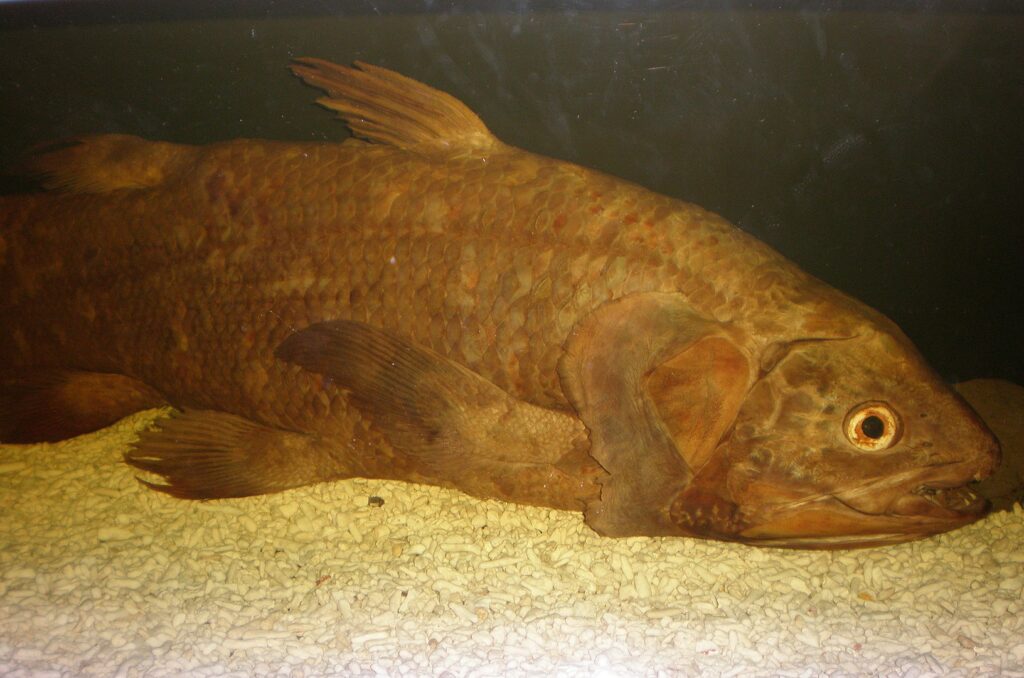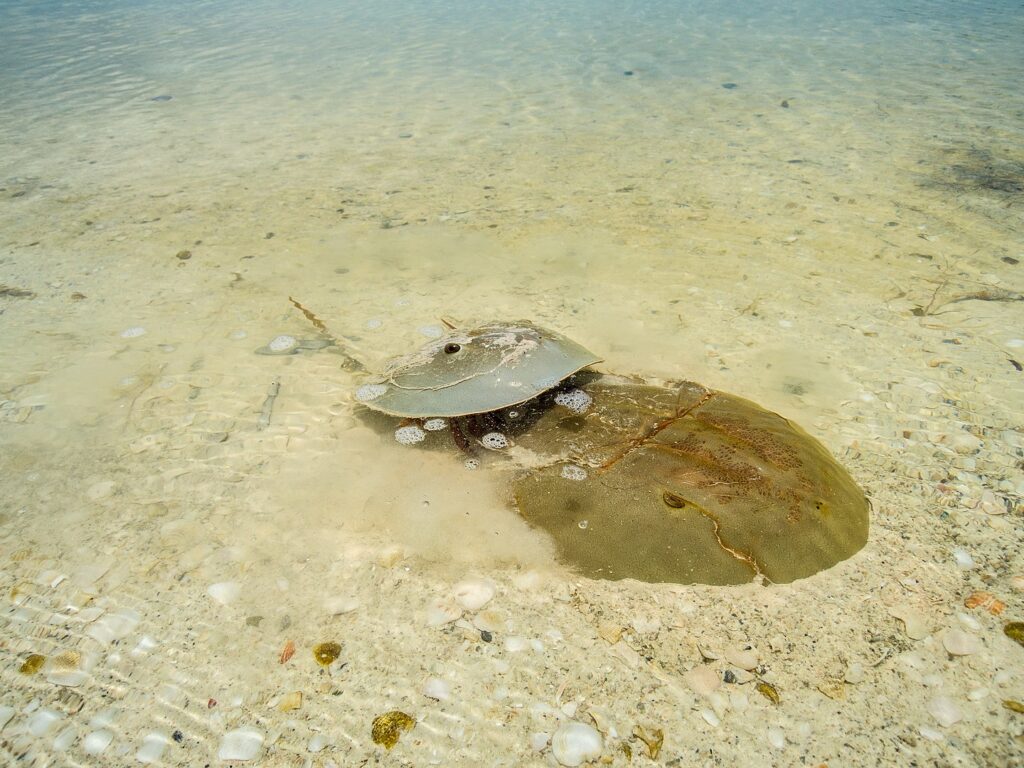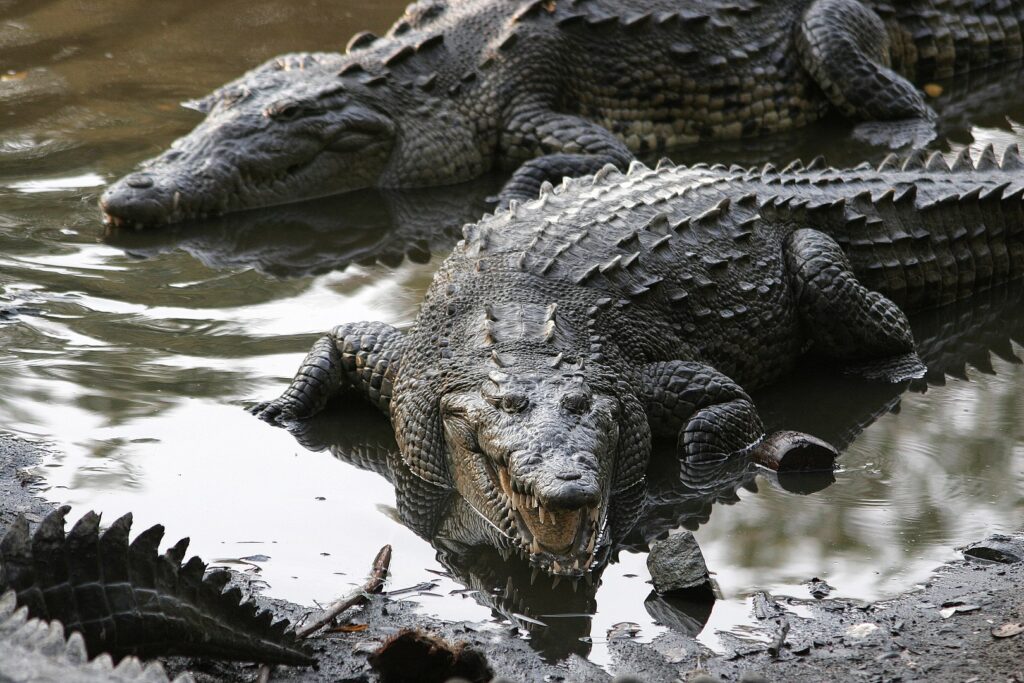Living fossil
Species that have existed for a long time, and that have not changed in appearance or function for millions of years, are known as living fossils. The term was coined by Charles Darwin in 1859. By looking at fossils – preserved remains – of the same species, scientists could see whether the species had changed or not. Since Darwin’s time, we’ve learned a lot more than that. Although a species may appear to have undergone little or no change, evolution is constantly happening, even when it is not visible. Living fossil is not a precise definition, and many scientists think we should stop using the term. Living fossil is used both for species that have existed for hundreds of millions of years, and other species that are much younger. There are both plants and animals that are called living fossils.
The nautilus is a mollusc, related to octupuses. It has changed very little in appearance the last 65 million years, and some count them as living fossils.
The goblin shark is a species that have existed for around 125 million years.
Photo: Dianne-Bray-Museum-Victoria-CC-BY
Nowadays, sharks in general are not called living fossils, but the frilled shark has looked more or less the same for at least 140 million years.
Photo: Citron-CC-BY-SA
The porcupine sea urchin has not changed in form in over 200 million years.
Some count cockroaches as living fossils, since they have existed and looked more or less the same for around 300 million years. But lots has happened to the cockroaches, even though it's hard to see on the surface.
Photo: Peterwchen-CC-BY-SA
A 150 million years old fossilised dragonfly, very similar to the dragonflies of today.
Photo: Kevin-Walsh-CC-BY
Some younger animals, like the mammal elephant shrew, count as living fossils by some researchers.
Photo: Galen-B.-Rathbun-CC-BY
Echidnas and platypuses are the only living mammals that lay eggs. They live in Australia, and some count them as living fossils.
Photo: UserFir0002-GFDL
The fish believed to have disappeared along the dinosaurs
A well-known example of a living fossil is the coelacanth. It is a fish that was thought to have gone extinct at the same time as the dinosaurs. But in 1938, a fishing boat off South Africa picked up a curious fish. It turned out to be a living coelacanth. The group of fish known as coelacanths have been around for more than 400 million years, and modern living fish are very similar to coelacanth fossils found from that time. Unfortunately, today, the coelacanth is a highly endangered fish species.

Photo: BrokenSphere-CC-BY-S
The horseshoe crab that looks like a helmet
The Atlantic horseshoe crab is another very old species. It is a primitive marine arthropod, which has not changed much in 400 million years. Their closest relatives alive today are arachnids. The Atlantic horseshoe crab looks remarkable with its helmet-like top, and many legs on the underside. They live along the east coast of the United States and in the Gulf of Mexico. During mating season, they appear on beaches in droves. But it can also be found here at Malmö Museums Aquarium.

Photo: dronepicr-CC-BY
Young crocodiles of today
For a long time, modern-day crocodiles and alligators were thought to be the perfect definition of a living fossil. After all, crocodiles look like genuine prehistoric animals, and it’s true that the relatives of crocodiles evolved before the time of the dinosaurs. But since then, crocodiles have continued to evolve a lot. Although they look very similar to their ancestors, a lot has happened to their genome, or DNA. Several species of crocodiles alive today are as young as 8–13 million years old, and continue to evolve all the time.

Photo: Tomascastelazo-CC-BY
Fossils of plants
Ferns are a group of very old plants. They appeared as early as 300 million years ago. In the province of Skåne, fossils of the fern species known as royal fern, which is 180 million years old, have been discovered. The fern grows all over Sweden and looks similar to the fossil that was discovered.
The ginkgo tree originated in China, and the trees that exist today are very similar to those that grew there 170 million years ago. The early relatives can be traced back even further, some 290 million years. In Malmö, planted ginkgo trees can be seen in several places, including Magistratsparken.
Ferns were the dominant group of land-living plants 350 million years ago. The species Osmunda claytoniana may count as a living fossil, since it has looked almost the same for 180 million years.
Photo: James-St.-John-CC-BY
Fossils of the ginko tree look much like the gingo trees of today, as far back as 170 million years.
Photo: Ghedoghedo-CC-BY-SA
Today, many ginko trees are planted in parks around the world.